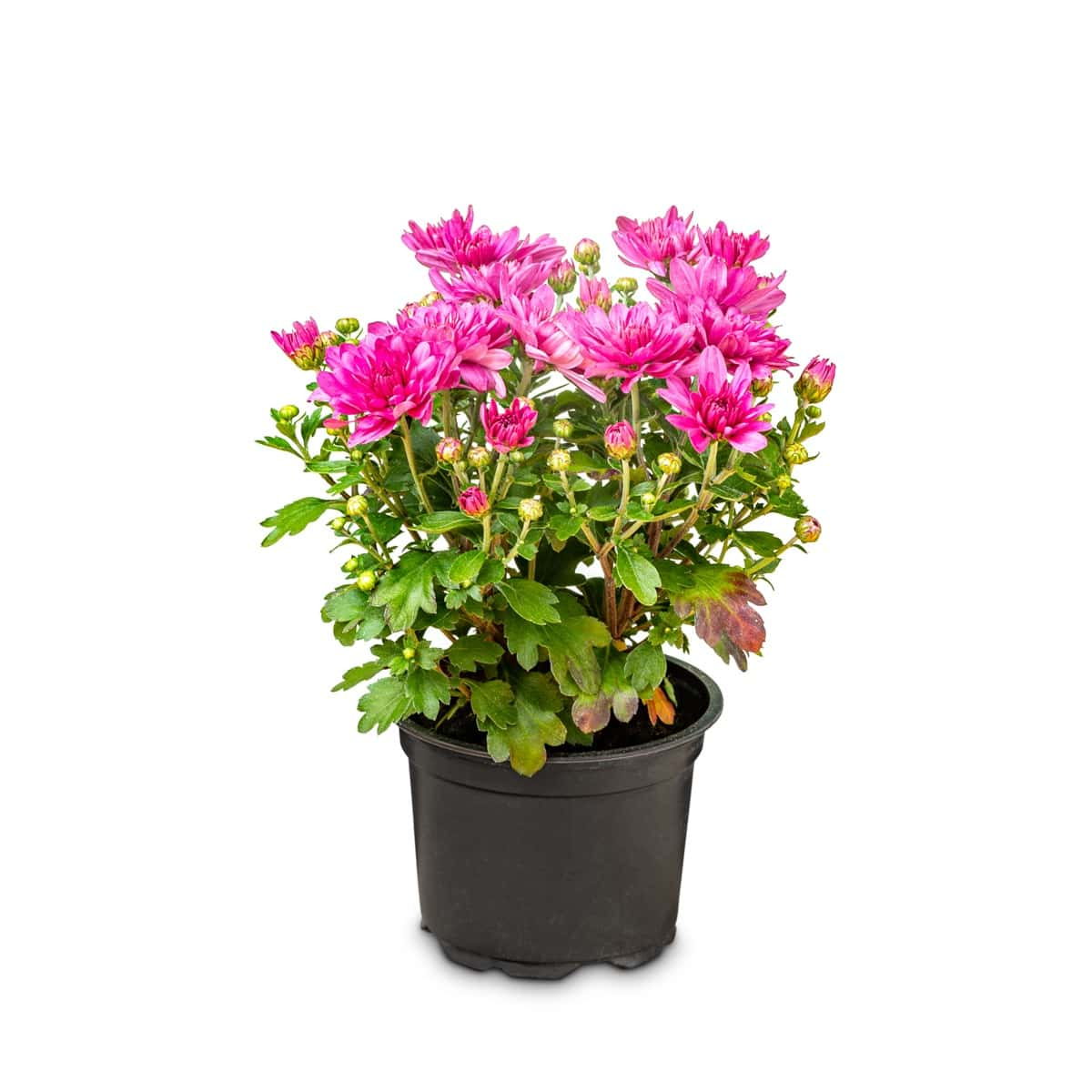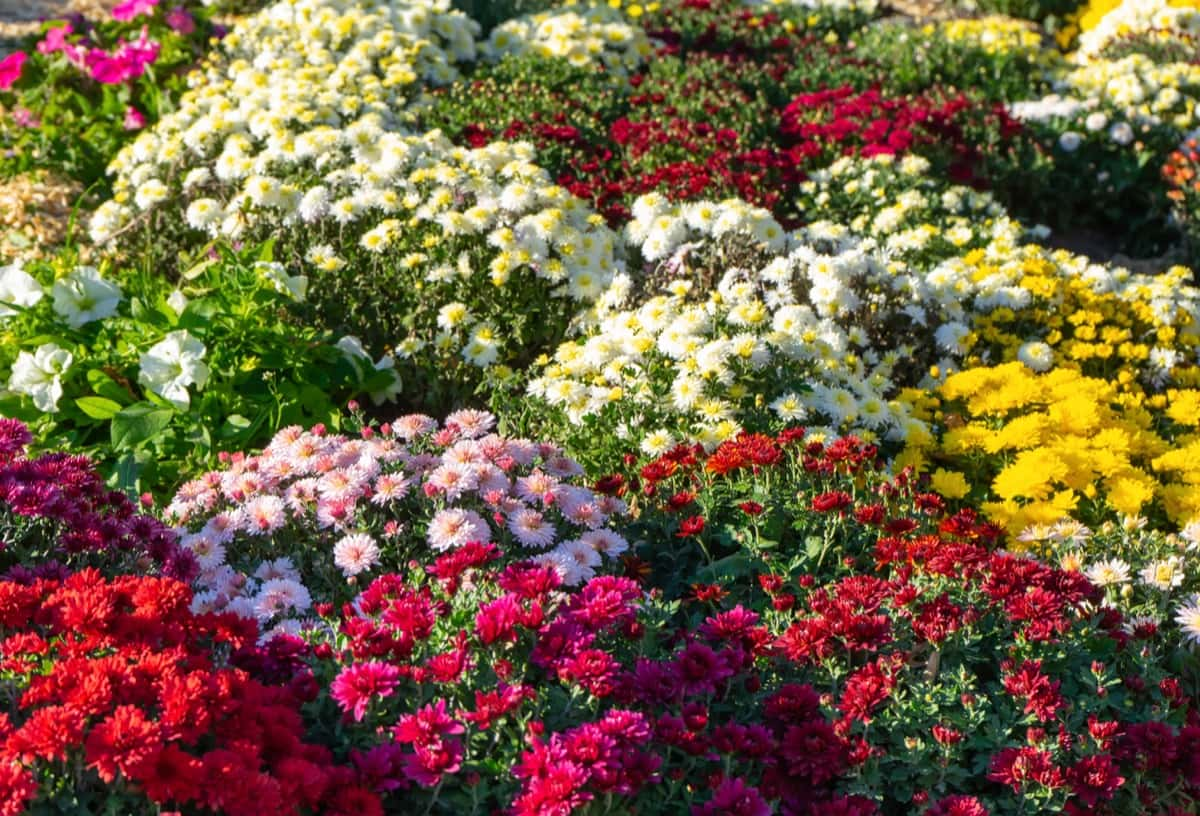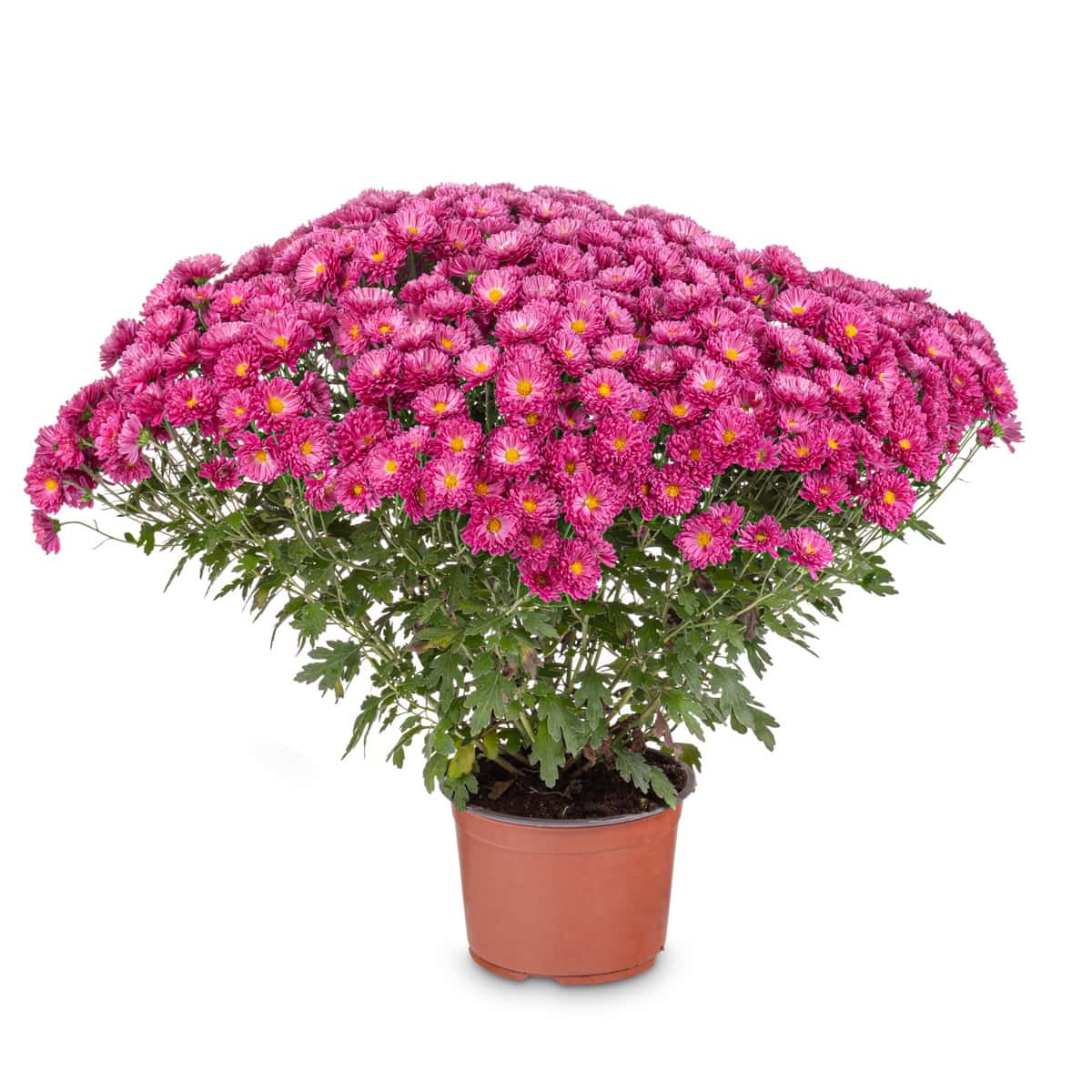By understanding the potted Chrysanthemum flowering problems and taking the necessary steps to address them, you can help your Chrysanthemum thrive and produce beautiful blooms. With proper care and a little bit of knowledge about pests, diseases, and growing conditions, you can enjoy vibrant flowers all season long.

9 Reasons Why Your Potted Chrysanthemum is Not Blooming
Late-Bloomers
Just because your Chrysanthemum hasn’t bloomed yet doesn’t mean it never will. Be patient and give it some time. Sometimes, all it needs is a little extra care and the right conditions to show off its blossoms in all its glory. Keep caring for your plant as usual, ensuring it has adequate sunlight, water, and nutrients. With a bit of patience and perseverance, those buds may surprise you when they decide to make their grand entrance into the world of vibrant blooms.
Lack of Sun
One potential reason for potted Chrysanthemum not flowering could be the lack of sunlight. These beautiful flowers thrive in bright, indirect light, so if they’re not getting enough sun exposure, they might struggle to produce those gorgeous blooms. Chrysanthemums typically need around 6 hours of sunlight each day to flourish.
If your plant is placed in a shady corner or hidden behind larger plants, it may not be receiving an adequate amount of sunlight. Remember, sunlight plays a crucial role in photosynthesis. Without enough sun, your Chrysanthemum may not have the energy it needs to bloom abundantly.
Overcrowded Containers
When the plant’s roots don’t have enough space to spread out and grow, it can impact its overall health and blooming potential. Overcrowding can cause stress on your Chrysanthemum, hindering its ability to focus on producing those beautiful blooms you are looking forward to seeing.
To encourage potted Chrysanthemum blossoms, consider repotting your Chrysanthemum into a larger container with fresh soil. Make sure there is ample room for the roots to expand comfortably without being cramped. Giving your plant some breathing space may just be the boost it needs to start flourishing again.
Nutrient Deficiency
If your Chrysanthemum lacks essential nutrients like nitrogen, phosphorus, or potassium, it may struggle to bloom to its full potential. Nutrient deficiencies can manifest in various ways, from stunted growth to pale leaves and lackluster blooms. To ensure your potted Chrysanthemum gets the nutrients it needs, consider using a high-quality fertilizer specifically formulated for flowering plants.
In case you missed it: How to Grow Chrysanthemums from Seed to Harvest: Planting and Care Guide for Beginners

Regularly feeding your plant with the right nutrients can help promote abundant blooms. Remember that each plant has unique nutritional requirements, so it’s essential to research the needs of Chrysanthemums to address any deficiencies effectively.
Inadequate Chilling Period
One possible common cause of potted Chrysanthemum flower failure could be an inadequate chilling period. Chrysanthemums require a period of cooler temperatures to set buds and bloom successfully. If your potted Chrysanthemum has not been exposed to the right amount of chill hours, it may struggle to go through its natural blooming process. Without this chilling period, the plant may remain in a vegetative state and fail to produce flowers as expected.
To ensure that your Chrysanthemum thrives and blooms beautifully, it is essential to provide it with the necessary chilling period. This can mimic the conditions it would experience in its natural habitat during the fall season when these plants typically bloom.
Waterlogged Soil
When the roots of your plant sit in water for too long, they can’t access the oxygen they need to thrive. This lack of oxygen can hinder proper growth and blooming. To encourage potted Chrysanthemum blossoms, ensure your pot has adequate drainage holes at the bottom. Excess water should be able to flow out of the container freely. Regularly check the moisture levels in the soil. Consider repotting your Chrysanthemum if you suspect that its current container doesn’t facilitate proper drainage.
Excess Nitrogen
Excess nitrogen in your potted Chrysanthemum can be a real blooming buzzkill. While this nutrient is essential for plant growth, too much of a good thing can lead to disappointing results. When nitrogen is abundant in the soil, your Chrysanthemum may put all its energy into producing lush green foliage at the expense of blooming flowers. Nitrogen imbalance can throw off the delicate flowering cycle of the Chrysanthemum plant, leaving you scratching your head, wondering why those vibrant blooms just won’t show up.
In case you missed it: Best Fertilizer for Chrysanthemum: Homemade, Liquid, NPK, Organic, and Schedule

It’s like being stuck in traffic when you’re already running late – frustrating and counterproductive. To remedy this issue, consider adjusting your fertilizer routine or opting for a balanced formula with lower nitrogen levels. By finding the right balance, you’ll give your Chrysanthemum the best shot at reaching its full blooming potential and dazzling you with a stunning floral display.
Pests And Diseases
One of the common causes of potted Chrysanthemum flower failure is due to pests and diseases. These pesky intruders can damage your plant, affecting its growth and ability to produce those beautiful blooms you’ve been eagerly waiting for. Aphids, spider mites, and caterpillars are just a few of the critters that might be causing trouble in your Chrysanthemum’s pot. Keep an eye out for any signs of infestation, such as yellowing leaves, distorted growth, or visible pests crawling around.
To combat these unwanted visitors, consider using natural remedies like neem oil or insecticidal soap. Regularly inspecting your plant and removing any affected leaves can also help prevent further damage. In addition to pests, diseases like powdery mildew or botrytis can also hinder blooming. Make sure to provide adequate air circulation around your plant and avoid overhead watering, which can create a damp environment ideal for disease development. By taking proactive measures to address pest and disease issues promptly, you’ll give your potted Chrysanthemum the best chance at thriving and eventually gracing you with its vibrant flowers.
Pruning
Pruning plays a crucial role in the blooming of your potted Chrysanthemum. This simple task involves removing dead or faded flowers and trimming back leggy growth to restore blooming in potted Chrysanthemums. It helps redirect the plant’s energy towards producing more buds, resulting in a fuller and more vibrant display. Regular pruning also prevents overcrowding within the pot, allowing for better air circulation around the plant.
In case you missed it: Homemade Fertilizers for Rosemary: A Guide to DIY Organic Fertilizers

This is essential to prevent diseases that can hinder flower production. When done correctly, pruning promotes healthier growth and enhances the overall appearance of your Chrysanthemum plant. Remember to use clean and sharp gardening shears when pruning to avoid damaging the stems. Aim to prune regularly throughout the growing season to maintain a well-shaped plant with abundant blooms.
Conclusion
Potted Chrysanthemums are a delightful addition to any home or garden, but it can be frustrating when they fail to bloom. By understanding the common reasons for potted Chrysanthemum not flowering, such as insufficient sunlight, you can take steps to rectify the situation and encourage your plant to thrive. Remember that with proper care and attention, your potted Chrysanthemum will eventually reward you with its beautiful blooms.
- Flower Garden Designs and Layouts for Beginners
- Planting and Spacing Techniques in Papaya: A Beginner’s Guide
- Growing Gold: Essential Techniques for Planting Pineapples
- How to Make Kalanchoe Plant Bushy: Home Remedies and Solutions
- 11 Reasons Why Your Gardenia is Not Blooming: Home Remedies and Solutions
- Eco Elegance: The Guide to Designing a Drought-Tolerant Landscape
- Gardening on a Slope: Strategies for Hillside Landscaping
- Nourish and Flourish: Top Organic Mulches for Thriving House Plants
- Everything You Want to Know about Indian Mogra Flower: Discover Uses and Growing